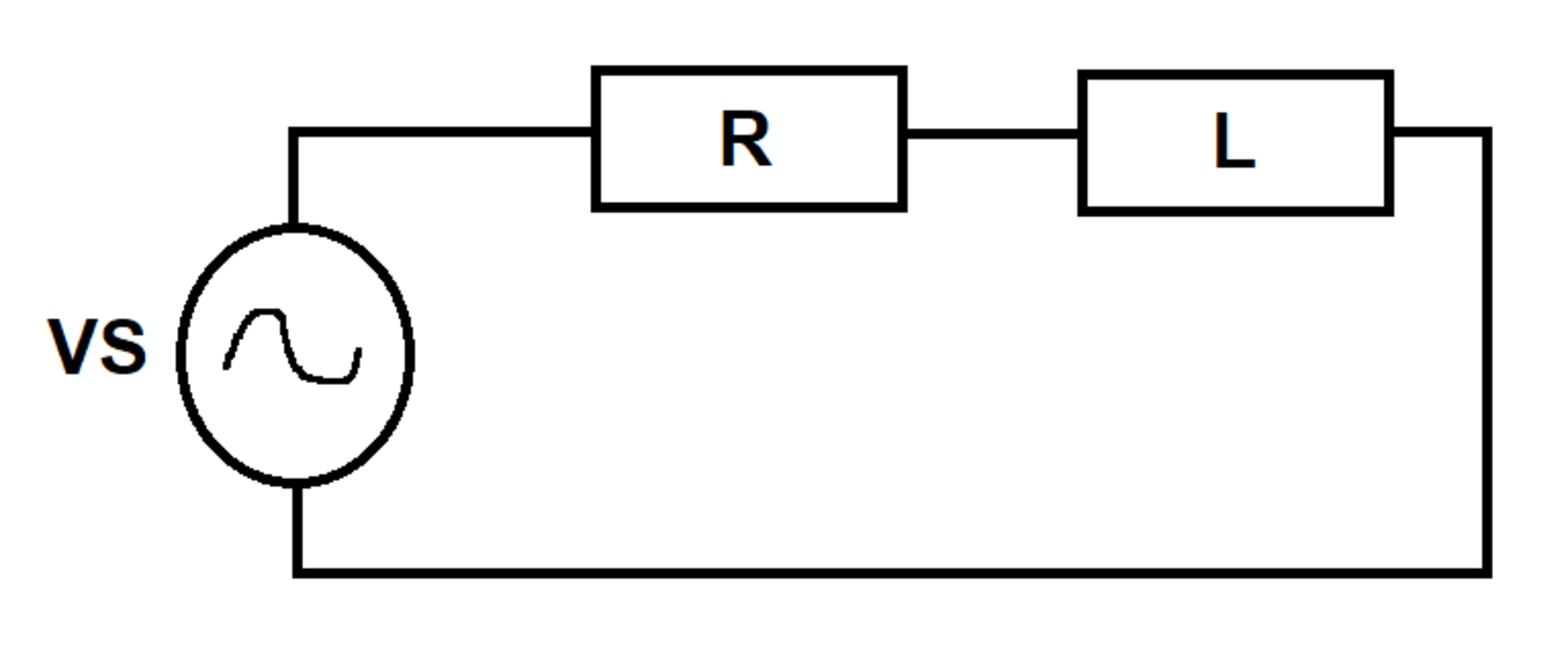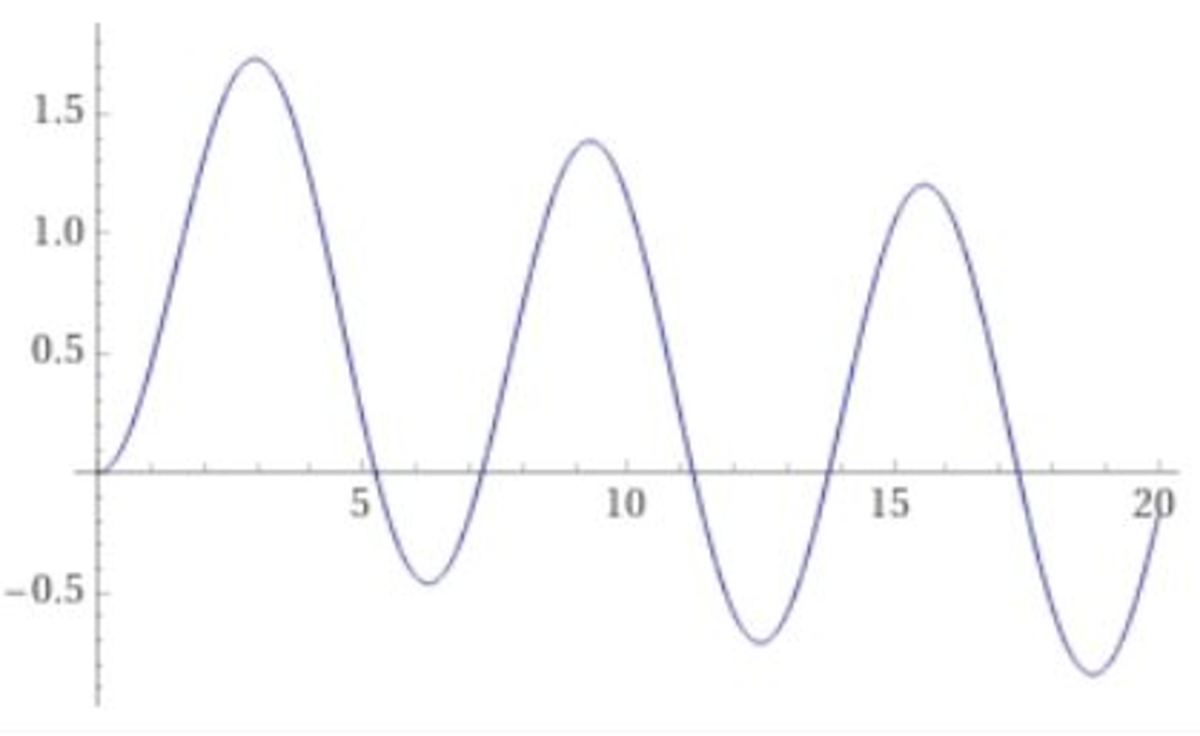Basic RL Transient
An voltage source excites an circuit as shown. At time , there is no current in the circuit.
What is the largest instantaneous value of the current in the circuit between to ?
Details and Assumptions:
1)
2)
3)
4)
All quantities are in standard
units

The answer is 1.728.
This section requires Javascript.
You are seeing this because something didn't load right. We suggest you, (a) try
refreshing the page, (b) enabling javascript if it is disabled on your browser and,
finally, (c)
loading the
non-javascript version of this page
. We're sorry about the hassle.
Per KVL, the R L circuit follows the ODE:
L i ′ ( t ) + R i ( t ) = V S ( t ) ⇒ i ′ ( t ) + 0 . 1 i ( t ) = sin ( t ) , i ( 0 ) = 0 .
By Laplace Transforms, we obtain:
s I ( s ) + i ( 0 ) + 0 . 1 I ( s ) = s 2 + 1 1 ⇒ I ( s ) = ( s + 0 . 1 ) ( s 2 + 1 ) 1 ,
and taking the inverse L.T. gives:
i ( t ) = 0 . 9 9 e − 0 . 1 t + 0 . 0 9 9 sin ( t ) − 0 . 9 9 cos ( t )
which has the plot for t ≥ 0 :
Taking the first derivative of the current and setting equal to zero yields:
i ′ ( t ) = − 0 . 0 9 9 e − 0 . 1 t + 0 . 0 9 9 cos ( t ) + 0 . 9 9 sin ( t ) = 0 ⇒ t = 2 . 9 6 8 ,
which is the time value of the first local maximum current value. A quick check of this value at the second derivative gives: i ′ ′ ( 2 . 9 6 8 ) = − 0 . 9 8 5 < 0 , which is a maximum value. So the maximum instantaneous current computes to i ( 2 . 9 6 8 ) = 1 . 7 2 7 9 8 amps.